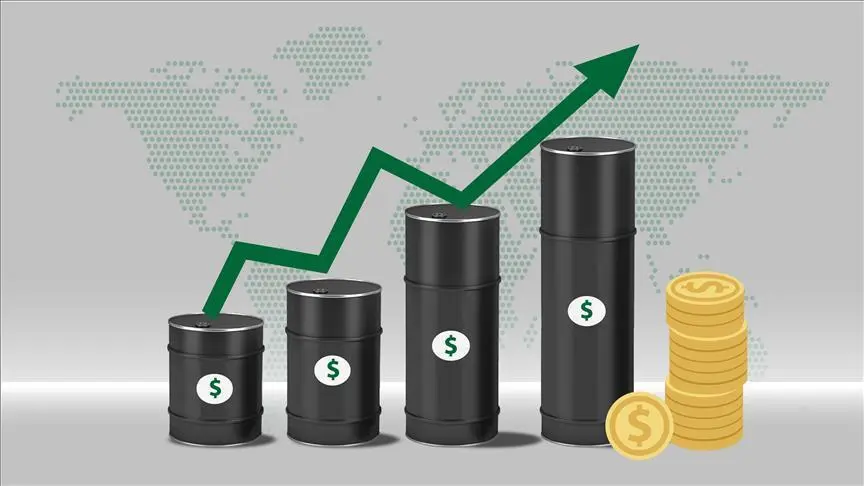As we progress through 2025, the global oil market is experiencing significant shifts influenced by the fundamental forces of supply and demand. A combination of geopolitical developments, economic policies, and production adjustments is shaping the trajectory of oil prices, with Brent crude averaging around $66 per barrel and West Texas Intermediate (WTI) at approximately $63. This article delves into the intricate dynamics affecting oil prices, examining the roles of supply and demand, and exploring the broader implications for the global economy.
Supply Dynamics: Production Increases and Strategic Decisions
OPEC+ Production Adjustments
The Organization of the Petroleum Exporting Countries and its allies (OPEC+) have been central to managing oil supply. In May 2025, OPEC+ plans to increase output targets by 411,000 barrels per day (bpd). However, actual increases may be lower due to overproduction by some member countries. Global supply growth for 2025 has been revised down by 260,000 bpd to 1.2 million bpd, primarily due to decreased output from the U.S. and Venezuela.
U.S. and Non-OPEC Production Trends
In the United States, production growth is slowing, influenced by trade tensions and market uncertainties. The International Energy Agency (IEA) notes that global oil supply may exceed demand by approximately 600,000 bpd this year, raising concerns about potential oversupply.
Geopolitical Influences
Geopolitical developments are also impacting supply. Progress in U.S.-Iran nuclear talks has raised the possibility of Iranian crude returning to the market, contributing to a 1.5% drop in oil prices on April 21, 2025. Additionally, Russia’s Economy Ministry has lowered its 2025 Brent price forecast by nearly 17% to $68 per barrel, citing a continuing decline in global oil prices due to waning demand.
Demand Dynamics: Economic Growth and Consumption Patterns
Global Economic Outlook
The global economic landscape is influencing oil demand. The IEA projects that global oil demand will grow at its slowest rate in five years in 2025, affected by U.S. tariffs and retaliatory measures from trading partners. Slower GDP growth could reduce the oil demand increase in 2025 by about 0.4 million bpd.
Emerging Markets and Energy Needs
Despite the overall slowdown, emerging markets continue to exhibit growing energy needs. Goldman Sachs Research forecasts that oil demand will grow for another decade, driven by energy needs from emerging markets as their GDP grows at nearly 4% annually in the latter half of this decade.
Interplay of Supply and Demand: Market Equilibrium and Price Volatility
The balance between supply and demand is delicate. An oversupply scenario, where production outpaces consumption, can lead to increased global oil inventories and downward pressure on prices. Conversely, if demand outstrips supply, prices may rise. Currently, the market is experiencing a surplus, with supply exceeding demand by around 600,000 bpd.
Price volatility is further exacerbated by geopolitical tensions and economic policies. For instance, the reintroduction of U.S. tariffs has led to market uncertainties, influencing investor sentiment and contributing to fluctuations in oil prices. On April 3, 2025, oil prices fell more than 6%, the most since 2022, as OPEC and others agreed to increase production, and concerns over U.S. tariffs intensified.
Strategic Responses and Future Outlook
OPEC+ and Market Stabilization
To address market imbalances, OPEC+ may need to consider further production adjustments. Analysts suggest that for prices to stabilize at $60 in 2026, OPEC+ would need to reverse output increases and adopt further production cuts.
Investment and Policy Considerations
Investment decisions in the oil sector are being influenced by current market dynamics. The U.S. Interior Department is initiating the process of creating a new five-year offshore oil and gas leasing program, potentially expanding drilling beyond the Gulf of Mexico. However, industry interest in venturing into more expensive and uncertain offshore regions remains unclear.
Long-Term Energy Transition
In the longer term, the global shift towards renewable energy sources and decarbonization efforts may impact oil demand. As countries implement policies to reduce carbon emissions, the oil industry may face structural changes, influencing both supply and demand dynamics.
The oil market in 2025 is characterized by a complex interplay of supply and demand factors, influenced by geopolitical developments, economic policies, and strategic decisions by key players. While current trends point towards a surplus and potential price declines, the situation remains fluid, with various factors capable of altering the market trajectory. Stakeholders must remain vigilant and adaptable to navigate the evolving landscape of the global oil market.







